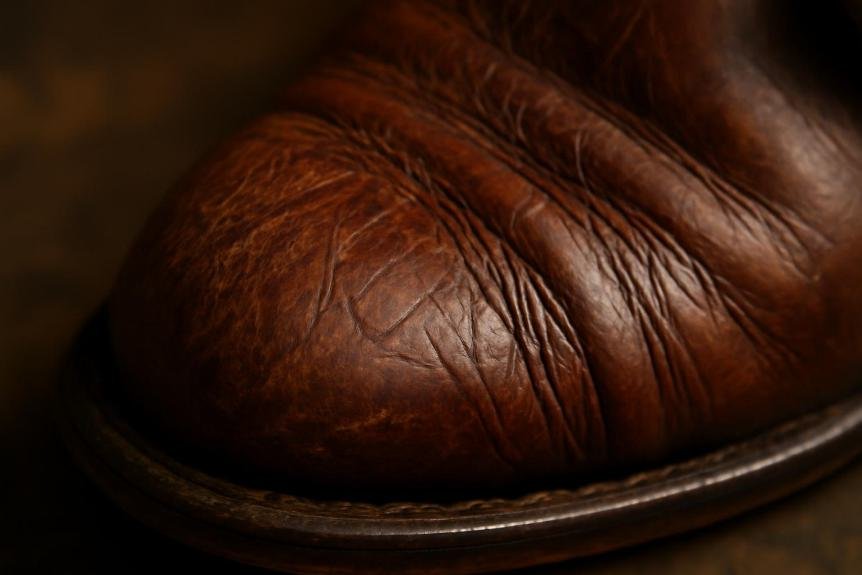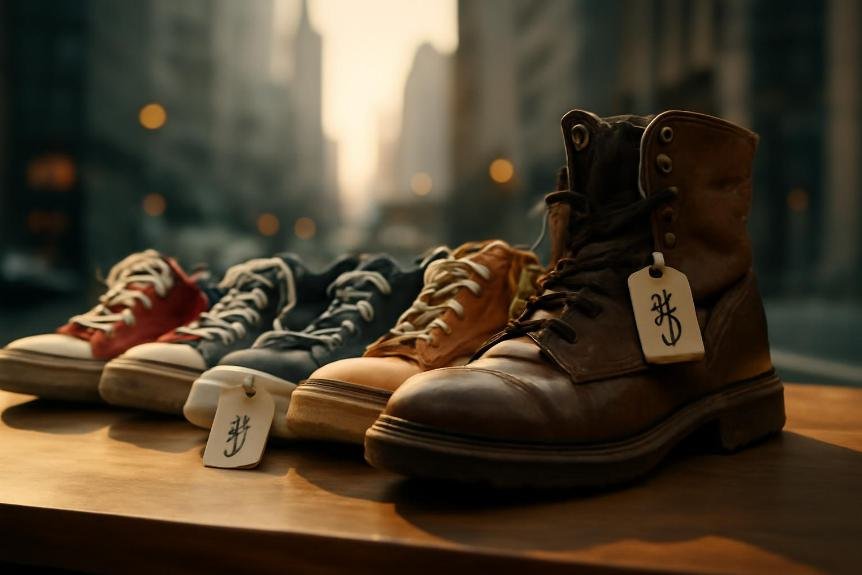Heel vs. Flat Slippers for Foot Pain: What’s Best for You?
Deciding on the right footwear when you’re dealing with foot pain can feel like navigating a minefield. I’ve been there, weighing the pros and cons of heel slippers versus flat slippers. It’s tempting to think that one size fits all, but that’s far from the truth when it comes to our feet.
I’ve done the legwork (pun intended) to dive deep into this dilemma. It’s not just about fashion or personal preference; it’s about what’s best for our feet. The answer might surprise you, as it’s not as straightforward as opting for the comfiest pair in your closet. Let’s explore why the choice between heel and flat slippers matters more than you might think.
Key Takeaways
- Understand Your Foot Structure and Pain Causes: Recognizing the underlying causes of your foot pain, such as plantar fasciitis or flat feet, is crucial before choosing between heel and flat slippers, as each offers different levels of support and cushioning.
- Pros and Cons of Heel Slippers: Heel slippers can provide beneficial arch support and reduce strain on the Achilles tendon but may lead to increased pressure on the forefoot and ankle instability, making them not suitable for everyone.
- Advantages and Disadvantages of Flat Slippers: Flat slippers offer stability, safety, and ease of use but may lack necessary arch support and can lead to quick wear and tear, posing limitations for individuals with specific foot conditions.
- Impact on Foot Health: The choice between heel and flat slippers should consider their impact on foot health, including arch support, weight distribution, and the risk of exacerbating foot pain or causing discomfort.
- Making an Informed Choice: Selecting the right slippers for foot pain requires understanding your specific foot needs, experimenting with different styles for personal comfort, and balancing comfort with support for optimal foot health.
Understanding Foot Pain

When it comes to managing foot pain, my journey has taught me that knowledge is indeed power. Understanding the root causes of this discomfort is crucial before making a decision on whether heel or flat slippers are the best option. Foot pain can stem from a variety of sources, ranging from temporary conditions like standing for too long or wearing ill-fitting shoes, to more chronic issues such as plantar fasciitis, flat feet, or arthritis.
The structure of the foot is complex, involving bones, tendons, muscles, and ligaments all working together to support our body weight and enable movement. When any part of this intricate system is off-balance or under unusual stress, it can lead to discomfort or pain. For instance, someone with flat feet may experience pain due to the lack of arch support, while another person might suffer from heel pain as a result of plantar fasciitis.
Choosing the right footwear can significantly impact how you manage and potentially alleviate foot pain. Heel slippers and flat slippers offer different levels of support and cushioning, which can either soothe or exacerbate certain foot conditions. It’s not just about personal preference; it’s about what will offer your feet the most relief and support based on your unique anatomy and the specific cause of your pain.
I’ve learned that it’s essential to listen to my body and pay attention to the signals it sends. If my feet are hurting, they’re telling me something is wrong. Whether it’s the need for more arch support, a cushioned sole, or a different type of footwear altogether, recognizing and responding to these cues is a critical step in managing foot pain. So, before deciding between heel or flat slippers, it’s important to consider what your feet are trying to tell you about your overall foot health and what they need to feel better.
Pros and Cons of Heel Slippers

When I’m pondering whether to wear heel slippers to alleviate my foot pain, it’s crucial to weigh the pros and cons. Everyone’s feet are unique, and what works for one person might not for another. That’s why understanding the benefits and drawbacks of heel slippers can guide my decision-making process.
Pros
First, let’s delve into the positives of wearing heel slippers:
- Improved Arch Support: Heel slippers can offer better arch support compared to flat slippers. This is particularly advantageous for those suffering from plantar fasciitis or other conditions where arch support is crucial for pain relief and comfort.
- Reduced Strain on Achilles Tendon: By elevating the heel slightly, these slippers can lessen the strain on the Achilles tendon, providing relief for those with Achilles tendinitis.
Cons
Despite the advantages, there are also some cons to consider:
- Potential for Increased Pressure: Wearing heels, even low ones, can distribute my weight unevenly across my feet. This can lead to increased pressure on the forefoot, possibly exacerbating pain in some conditions like metatarsalgia.
- Risk of Ankle Instability: Heel slippers can potentially lead to ankle instability, increasing the risk of sprains, especially if the heel height exceeds 2 inches.
It’s clear that heel slippers aren’t a one-size-fits-all solution. They have their distinct advantages, such as better arch support and reduced strain on certain parts of the foot. However, the potential for increased forefoot pressure and ankle instability cannot be ignored. Depending on the specific needs and conditions of my feet, the choice between heel and flat slippers should be made carefully, keeping both the pros and cons in mind.
Pros and Cons of Flat Slippers

Transitioning from the world of heeled footwear to the domain of flat slippers, I’ve observed that flat slippers aren’t without their own set of advantages and challenges. While some swear by the comfort and stability flats offer, others find them less beneficial for specific foot conditions. Here’s a breakdown of my findings.
Flat Slippers Advantages:
- Stability and Safety: One of the primary benefits I’ve noticed is the increased stability and safety. The lower ground clearance reduces the risk of ankle twists and falls, making them a safer option, especially on slippery surfaces.
- Versatility: Flat slippers are impressively versatile. They can seamlessly transition from loungewear to a quick grocery run. Their wide range of designs and materials means there’s something for everyone.
- Ease of Use: For days when I’m in a hurry, the simplicity of slipping on a flat slipper cannot be overstated. There’s no fuss, making them a go-to for quick errands or when I’m running late.
- Insufficient Arch Support: A significant drawback I’ve encountered is the lack of arch support in many flat slippers. This can lead to foot fatigue and exacerbate conditions like plantar fasciitis for those who require more structured support.
- Increased Plantar Pressure: Prolonged wear of flat slippers can place additional pressure on the plantar aspect of the foot. This might cause discomfort over time, especially for those with pre-existing foot conditions.
- Wear and Tear: Generally, I’ve found that flat slippers can wear down faster than their heeled counterparts, especially at the sole, due to the uniform pressure distribution when walking.
In tackling the question of whether flat slippers are the right choice for alleviating foot pain, it’s clear that they offer both commendable benefits and notable limitations. As with any footwear, the key lies in understanding my foot’s specific needs and choosing a slipper that provides the right balance of comfort, support, and safety.
Impact on Foot Health

When considering whether to wear heel slippers for my foot pain instead of flat slippers, it’s crucial to understand the impact each has on foot health. My years of experience dealing with foot pain and researching footwear have led me to uncover some eye-opening facts that everyone should be aware of.
Heeled slippers can provide arch support that flat slippers often lack. This is particularly beneficial for individuals with conditions like plantar fasciitis or flat feet. By elevating the heel slightly, these slippers can reduce strain on the Achilles tendon and relieve some of the discomfort associated with these conditions. However, it’s not all positive; prolonged wear of heels tends to shift body weight forward, increasing pressure on the forefoot, which may exacerbate pain and lead to issues such as metatarsalgia or Morton’s neuroma.
In contrast, flat slippers advocate for a more natural foot posture. They distribute body weight more evenly across the foot, which can alleviate pain caused by overpronation or heel spurs. Yet, the lack of arch support in many flat slipper designs might not be ideal for everyone. Over time, this can lead to increased foot strain and discomfort, especially if one has high arches or requires additional support.
Here’s a quick breakdown of the primary considerations for each type of slipper:
| Aspect | Heel Slippers | Flat Slippers |
|---|---|---|
| Arch Support | Provides support, beneficial for certain conditions | Often lacking, may not suit all foot types |
| Weight Distribution | Shifts weight forward, can increase forefoot pressure | Even distribution, beneficial for stability |
| Risk of Pain | Can exacerbate forefoot issues | Lack of support may strain foot |
It’s clear that the choice between heel and flat slippers isn’t straightforward. The decision hinges on understanding the unique needs of my feet and how different types of footwear impact those needs. Whether it’s the added arch support from heeled slippers or the natural posture facilitated by flats, the right option should cater to personal comfort, foot health, and lifestyle considerations.
Making the Right Choice

When it comes to dealing with foot pain, the choice between heel slippers and flat slippers isn’t one-size-fits-all. My experience, coupled with advice from podiatrists, suggests that understanding your foot’s specific needs is key. So, how do you make the right choice for your feet?
First, let’s talk about arch support. Heeled slippers can offer significant arch support, which is a boon for anyone suffering from conditions like plantar fasciitis. However, it’s important to note that not all heeled slippers are made equal. Those with a slight elevation and a well-contoured footbed can provide the support needed without putting undue pressure on the forefoot.
On the other hand, flat slippers might be the way to go if you’re looking for a more natural foot posture. Their design promotes an even weight distribution across the foot, which can help alleviate pain from overpronation. Yet, the lack of arch support in many flat slippers might not cater well to those needing that extra support.
Here’s a quick look at the benefits of each based on common foot problems:
| Foot Issue | Heeled Slippers | Flat Slippers |
|---|---|---|
| Plantar Fasciitis | Good | Fair |
| Overpronation | Fair | Good |
| General Foot Fatigue | Fair | Good |
Ultimately, the decision comes down to personal comfort and foot health. It’s wise to try on multiple styles to see what feels best. Moreover, paying attention to how your foot feels throughout the day in each type of slipper can offer additional insights.
Remember, your feet are as unique as you are. What works for one person might not work for another. It’s all about finding the balance between comfort, support, and your lifestyle needs. Whether it’s heel slippers for that extra arch support or flat slippers for a more natural stance, the right choice should bring relief and cater to your foot’s requirements.
Choosing the right slippers for foot pain isn’t a one-size-fits-all solution. It’s about tuning into your body’s unique needs and finding that sweet spot between comfort and support. Whether it’s the enhanced arch support of heel slippers for conditions like plantar fasciitis or the natural posture and weight distribution offered by flat slippers, the key is to listen to your feet. I’ve found that experimenting with different styles and noting how my feet respond over the course of the day is invaluable. Remember, your feet carry you through life’s journeys, so investing the time to cater to their needs will pay off in the long run. Let’s stride towards better foot health together, one step at a time.
Frequently Asked Questions
What are the main considerations when choosing between heel and flat slippers for foot pain?
When choosing between heel and flat slippers for foot pain, the primary considerations include individual foot needs, specifically arch support. Heeled slippers are better for conditions requiring enhanced arch support like plantar fasciitis, while flat slippers favor a natural foot posture and even weight distribution, beneficial for alleviating pain from overpronation.
How can heeled slippers help with foot conditions such as plantar fasciitis?
Heeled slippers can help with conditions like plantar fasciitis by providing significant arch support. This support can ease the strain on the plantar fascia, reducing pain and discomfort associated with the condition.
Are flat slippers good for foot pain?
Yes, flat slippers can be good for foot pain as they promote a more natural posture of the feet and even weight distribution. This can be particularly helpful in alleviating pain caused by overpronation.
What should I pay attention to when trying on slippers for foot pain?
When trying on slippers for foot pain, pay attention to how each type feels, focusing on factors like comfort, support, and whether they address your specific foot health needs. Consider how your feet feel throughout the day in each type of slipper to make an informed decision.
Is the decision between heeled and flat slippers purely based on foot health?
No, the decision between heeled and flat slippers is not purely based on foot health. It also depends on personal comfort and lifestyle considerations. Balancing these factors with your individual foot requirements is key to making the right choice.












